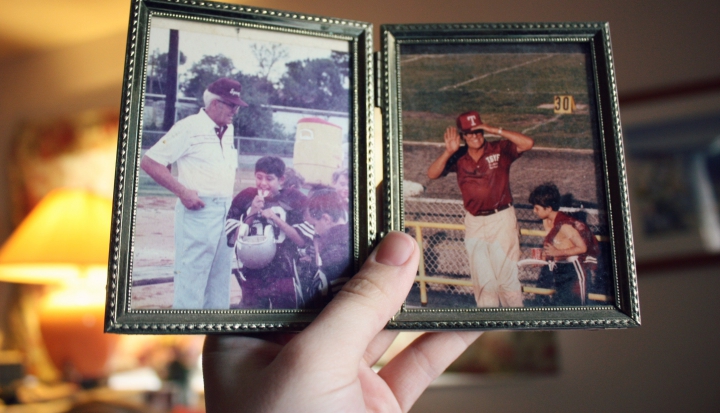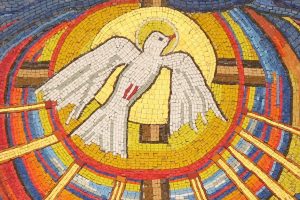Life in a college town may be full of diversity, but it also has a shallow root system where faces and friendships come and go with the university calendar. Parish life and programs need to catch on quickly, and, just like with a grass fire, when you get a good idea, you stand back and watch it grow.
When our new pastor, Father Jim, suggested we embark on making the entire month of November one of “re-membering” our loved ones who had “departed this life marked with the sign of faith,” as the liturgy puts it, I jumped at the opportunity. I wondered if it might help bring together our two-part parish—one English-speaking, one increasingly Hispanic—to a common celebration of our dead.
When my mother died several years ago, I struggled with the time-honored tradition in our family that encourages Masses to be said on behalf of the departed. How could I keep having Masses said for my mother buried three states away? Would there be anyone left in her parish to remember her? Or if I had Masses said in my own parish, who would know her?
My pastor’s suggestion was one way to connect my biological family to my parish family with whom I now spend my life. Knowing that our Hispanic parishioners were busily preparing ofrendas, home altars in celebration of the Day of the Dead, my hopes were that we might be able to combine traditions and cultures into one parish remembrance. But how to introduce them to each other?
In November’s All Souls and All Saints celebrations the church reclaims our dead; they are not forgotten but brought before us as saints in waiting or as saints in heaven in direct communication with us, the believing saints on earth. Hispanic Catholics gather on these days at a loved one’s grave or at home for remembrance, creating ofrendas where sugar skulls and skeletons, favorite foods, songs, and stories recall the deceased loved one.
Using the idea of an ofrenda, we created a space in our church entry hall for a pictorial display. We made the display large enough to encourage parishioners to stop and take five or ten minutes to look at someone’s life and respond by contributing pictures of their relatives for us to remember during the month.
We constructed a combined living room and dining room setting, as in a museum, complete with an old lamp my mother had made, a comfy chair used by another woman’s father, tall shelving, and a long dining room table covered by a tablecloth. On the table were 12 colorful place settings topped wih dried foods and surrounded by 12 chairs. After we finished placing the items, we hung a banner created by a local artist above the homey setting that read, “Our unseen family still seated at the table.”
Feeling happiness tinged with fear of failure, I placed the picture of my mother into the corner of a high-backed chair next to the lamp she had lovingly made for me. I was surprised by a surge of emotion watching others quietly setting their relatives’ pictures on bookshelves and chairs. Father Jim brought his own framed pictures, writing the peoples’ names on the front of the frames, connecting the most important moments of his past life to his new pastoral life.
There was one piece of furniture I had brought in the backseat of my car but was hesitant to place. I feared it might create too much of an emotional heaviness over the scene. Still, I summoned the courage to arrange it among the rest and gently set the small white children’s rocking chair into one corner next to a tall bookshelf.
Now we waited and wondered: How would people respond?
As the first weekend of Masses concluded, a few pictures were added to our display, but the following weekend the number began to grow. Soon, pictures covered the table. Faces appeared next to one another on the bookcases, chairs around the table filled, plates held pictures, and one person brought in their own bookshelf with family portraits from as many as four generations.
People flowed through the exhibit on Sundays and throughout the week. Non-Catholics came to see the display, parishioners brought out-of-town guests, and one person commented that they felt this was a good time to reenter the church they had been opposed to in previous years.
With each subsequent year we have expanded on our idea, knowing that some pieces of furniture must be returned. The rockers, high-backed chairs, plates, and shelves are especially important and meaningful. For certain, we will need to add more shelves as the numbers of pictures flow over everything that is placed in the exhibit and continue to grow during the month.
And for sure I will once again put in the backseat of my car the little white rocking chair, where the framed pictures of two small children had been placed to be remembered by this parish community of saints.
This article appeared in the November 2011 issue of U.S. Catholic (Vol. 76, No. 11, page 47-48).














Add comment